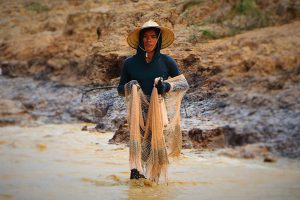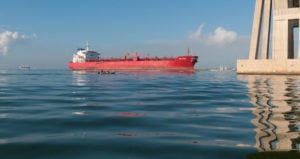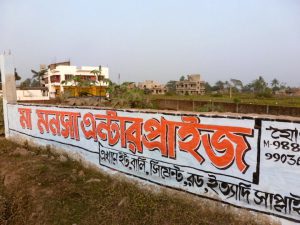As the sun’s first rays tried desperately to crack through the fog that covered the Karnali river in the village of Daba in western Nepal’s Dailekh district, Khagisara Thapa was busy preparing her kids for school. A few metres away from her tiny roadside restaurant are a set of one-story houses with red zinc sheet roofs built by the company behind the country’s largest and most controversial hydropower project – the 900 MW Upper Karnali hydropower dam.
Nepal is now developing large hydropower dams after decades of hiatus due to political instability and civil war. The 900 MW Upper Karnali is the largest project and will produce more than the country’s current total energy production of 800 MW. But it has been controversial from the start. Opponents say that Nepal has sold its most lucrative hydropower project to India who will export the power at a low cost. River conservationists are demanding that the country’s wildest river is kept free flowing to promote tourism and protect the religious, cultural and ecological value of the river. However, government officials claim the project will bring a host of benefits to the country and local people in the remote region.
The Karnali River originates from Mount Kailash on the Tibetan Plateau and crosses Nepal before entering India as the Ghaghara River, one of the major tributaries of the Ganga.
The Third Pole’s Nepal Editor, Ramesh Bhushal, rafted down the river for seven days with a group of Nepali and international activists, who aimed to raise awareness of the plight of Nepal’s wildest Himalayan river.
“I have heard that they (project) will compensate [us for] our land, but I don’t know where will we have to move to,” she said as she flapped away smoke from the firewood while cooking.
If the dam is built, the Karnali—the longest river of Nepal – will be dammed to convert its currents to produce electricity. “The project [developer] is negotiating land compensation. We say NPR 1 million (about USD 10,000) per 500 metre squares but they are only willing to provide USD 8,000,” said Khagisara’s husband, Chakra Thapa.
The Karnali region, taking its name from the river running through it, is one of the most remote and least developed regions of Nepal, where people suffer from malnutrition, famine, natural disasters and epidemics. But it is also one of the most beautiful places in the country. The region boasts the country’s two of the country’s largest lakes – the Rara and Shey Phokshundo – as well as the river.
A couple of hours drive down a windy path and we arrived in a small town called Tallo Dhungeshwor, where a group of activists were planning to paddle down the river for a week in an attempt to save it from the dam developers.
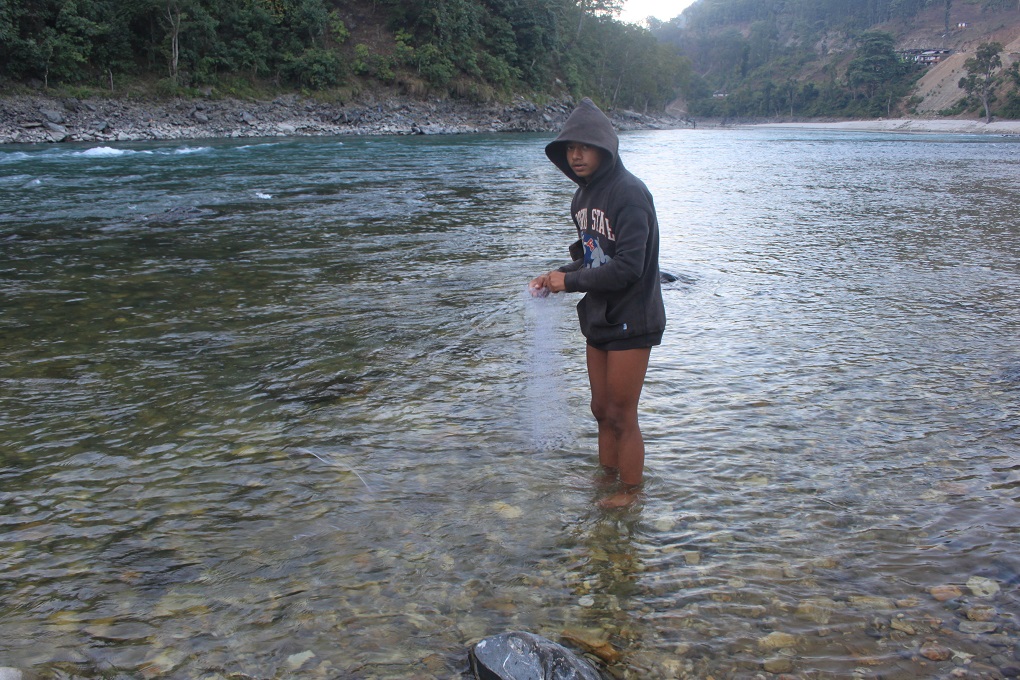
Nearby seventeen year old Bishal Shahi was busy fishing on the river. He had built a small temporary pond on the bank of the river to collect the fish he caught. “I heard that 50% of the water flow will be maintained even if the hydropower is built so it will be enough for the fish,” said Shahi. But under Nepal’s environmental protection rules hydropower projects only have to release 10% of water downstream I pointed out. “I don’t know about that,” he replied.
Locals have high hopes that the hydro project will bring job opportunities and development to a region where unemployment levels are high. Shahi’s neighbour, Govinda Thapa, used to be a construction worker for another hydro project in Rasuwa district, in north central Nepal, but he quit a few months ago as the place was too far away.
“If they give me a job here I don’t have to leave my family for work,” he added. But he is worried that the political parties will fill the jobs with their own cadres if the hydropower dam is built.
Controversies surround the project
The Karnali hydro project has been controversial since the Indian company GMR won the bid in 2008. The company has completed its survey, signed the project development agreement and is now knocking on the doors of the funders to arrange finance. Last week, the government of Nepal gave the company an extra year to secure the funds.
The government says the project will create 3,000 direct jobs for locals, generate 108 MW of free energy, and 27% of free equity will go to Nepal. But critics say the benefits are nothing compared to what the company will take away from the country. “Why should we give the best project to an Indian company at literally ‘no benefit to Nepal’,” said Dipak Gyawali, who was formerly Nepal’s water resources minister.
The company says Nepal will get NPR 400 billion (USD 3.7 billion) in terms of royalties, dividends and taxes over 25 years. “You can count big figures but it’s the cheapest, most lucrative project. In addition, why should we give a NPR 5 billion subsidy to a foreign company that will export energy,” he added. The Nepali government has agreed to give the company a tax exemption of NPR 5 million per MW as an incentive to develop the project.

But government officials argue that expecting others to build the project and asking for all the benefits is not possible. “If we expect others to build the project, bring money and invest, then that demands give and take from both sides. However, the question of whether Nepal should develop the dam or not is a different one,” said Pravin Aryal, joint secretary at Nepal’s energy ministry.
The feasibility studies identified the possibility of developing a 4,180 MW project a little further upriver from where the current 900 MW project is planned. But experts argue that the government has deliberately killed this option by handing over such a lucrative project to India. “Our concern is why the best and cheapest project was handed over to a foreign company who will export the energy, while we have a severe shortage of power. It should be developed for us,” said Ratan Bhandari, a water rights activist from the region.
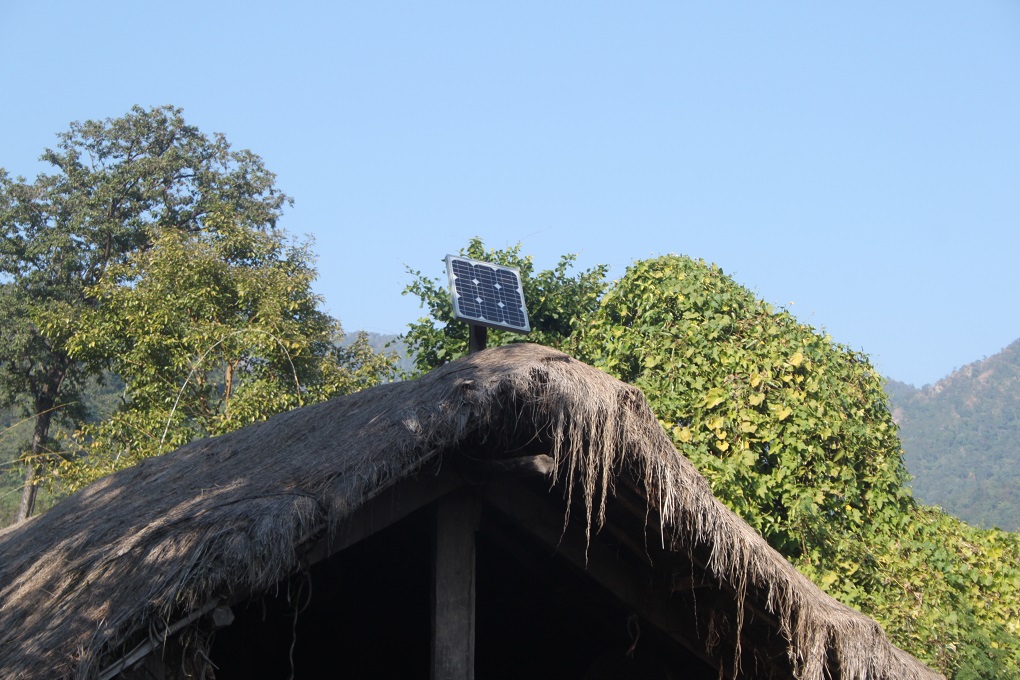
The Upper Karnali has rare hydropower potential, where water can be pushed through a 2.5 kilometre tunnel, during which it drops down a height of about 130 metres, creating a huge amount of pressure. This project is often called Nepal’s “jewel in the crown”. “The jewel has been sold at the rate of coal,” said Ratna Sansar Shrestha, a water rights activist.
Shrestha is also worried about legal issues. “When the river is used to produce electricity and sell it to another country it is resource sharing and trading between two parties and so it should be ratified by the parliament,” he said. But in a similar case filed against the West-Seti hydro project, the courts ruled that the agreement to share the natural resources was between Nepal’s authorities and a private company, rather than two countries, and so did not need parliamentary ratification. Shrestha says this was a “misinterpretation of the constitutional provision”.
Cashing in on local frustration?
People living in the marginalised Karnali region naturally want development and prosperity. For centuries, Karnali has been one of the world’s least exploited rivers. Most people are desperate to see something happen as soon as possible. Either they do not care about who takes the electricity or they have not been told what will happen in the future. People we met wanted proper compensation for their land, relocation to a good place, jobs and electricity. There was a strong feeling among many people who I talked to during the trip that Nepal’s politicians have played with their dreams for so long and they are not going to listen to them any more. “It’s our leadership’s fault as they are the ones who have to safeguard our rights and national interest,” said Dipak BC from Rabalde village where the project will build a powerhouse.
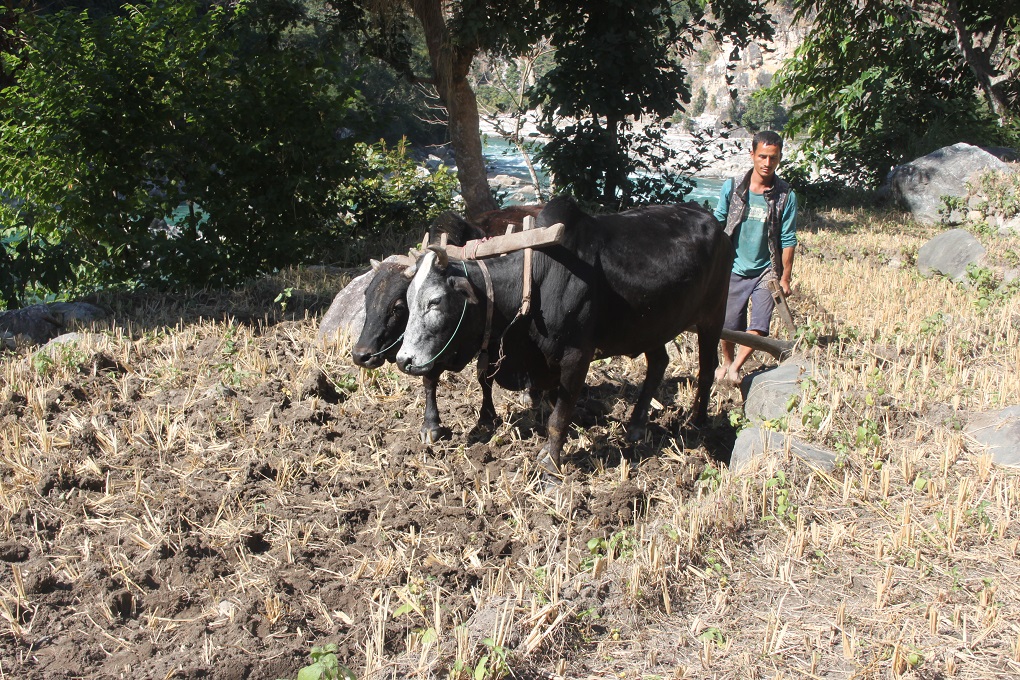
When I asked what the river has given local people, 30 year old Naresh Bishwokarma from Badigaun in Kailali replied “a few jars of water” with a smile, as he fetched drinking water from the river. Despite its cultural, ecological and aesthetic value, this river has given very little to local people. None of the villages we visited during our 180 kilometre rafting trip were connected to electricity grid or had irrigation.
Megh Ale, a river conservationist and river guide, said life is almost the same as it was in the early 1980s when he first took a trip down that river. “But it’s not true that the hydro project will bring prosperity and development for the population, however it might benefit the international company and a few allies,” he said.

Conservation versus development
“We can generate enough electricity from the adjoining rivers like West Seti, Bheri and other tributaries, but saving the Karnali river is worth it as it’s a holy river,” said Megh Ale.
The Karnali River originates in western Tibet and joins the Sharda River in Brahmaghat, India, which then joins the Ghaghara river – the largest tributary of the Ganga by volume. The Karnali has different names as it travels from one country to another: it is called Kung Chiao in Chinese, Karnali in Nepali and Ghaghara in Hindi.
The river flows from Mount Kailash, revered by Hindus, Buddhists and Jains, and so Ale believes the region could be developed for religious tourism. “Money doesn’t need to come from selling power, money from tourism or pilgrimage or any other sources has equal value,” he continued.
However, others say the project should be developed by Nepal for its own people. “Why should a country give the cheapest project to the foreigners and live in darkness,” said Ratan Bhandari, water right activist from the region. “It looks like locals aren’t vocal against the project, which is not true, in fact those voices against the project have been suppressed,” he said. “People have been told they will be given a handsome amount for their land, a few local leaders have been bribed, and many locals don’t even care where the electricity will go,” he added.
Can paddles save the river?
Before we started rafting, our guide told us how to survive if our boat flipped over and asked us to use as much energy as possible while paddling over the strong waves. The Karnali is one of the world’s most famous rivers for white water rafting, with world class rapids called Godshouse, Flip and Strip, Juicer, Freight Train, Sweetness and Light. Other than personal survival, though, the question is that when faced with the waves of development are strong and influential and the desire to dam the river grows, will these few paddles be enough to save the river?
“If a country like Nepal can deploy thousands of soldiers to guard the tigers and rhinos, billions of rupees to protect the forests, why can’t at least one river be saved?” asked Gary Wockner, a river activist and writer with Waterkeeper Alliance—a global group of river conservationists.
However, the Karnali is trapped between the hopes of local people, corporate interests, water politics between two countries, and the sentiments of conservationists. It is impossible to meet the interests of everyone; some will be sacrificed for the sake of others. “Our paddles are strong and we firmly believe that this beautiful river can be saved. There are many other rivers that could fetch electricity to the country as much as needed,” Ale became emotional.
As we were about to end the trip in Chisapani where Karnali crosses the country’s eastern highway in the southern plains and loses its energy before reaching to India, the whole group raised one last cheer, “Save the Karnali”.

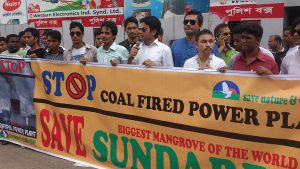
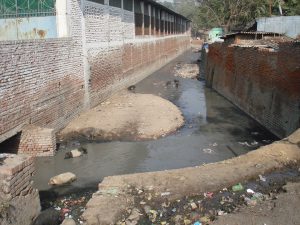
![[:ur]An avalanche, such as this one on Annapurna in Nepal, can be set off by a tremor as low as 2 on the Richter scale [image by Maureen Barlin] [:]](https://dialogue.earth/content/uploads/2017/02/Avalanche-300x200.jpg)

